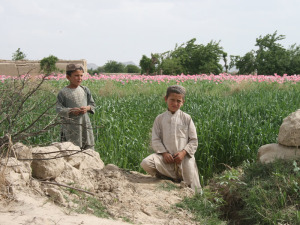Try Eradicating Afghanistan’s Poppies; Blow $7.6 Billion
The U.S. military learned the hard way not to interfere with Afghanistan’s thriving production of poppies, the colorful flowers that are the source of opium and, by extension, heroin.
Now we know the cost of that lesson—a cool $7.6 billion.
On Oct. 14, the U.S. Special Inspector General for Afghanistan Reconstruction—a.k.a., SIGAR—alerted the Defense, State and Justice Departments to this latest dollar figure for poppy-elimination efforts.

And here’s SIGAR’s kicker. Despite the nearly $8 billion America has spent on eradication efforts, today the Afghan opium trade is booming. At 400,000 acres, the poppy crop in 2013 was the biggest ever.
One potent flower
Cultivating poppies has been illegal in Afghanistan since 2001, the same year that U.S. and allied troops invaded. But local authorities have enforced the law only sporadically. After all, they benefit from the opium trade, too.
Likewise, for the first three years of the occupation, the U.S. military left the poppy farmers alone.
The Americans were there to fight the Taliban, not to regulate an illicit drug trade or reform the farming habits of a whole society. In the early days of the war, Pentagon planners removed drug-related sites from lists of potential targets.
The State Department and the Drug Enforcement Agency, however, were determined to stamp out the poppies—and pressured the Defense Department to help raid laboratories and bulldoze fields. The State Department and the DEA argued that there was a clear connection between Afghanistan’s black-market opium and the Taliban.
They were right. The insurgents act as middle men in the poppy trade and have funneled millions of dollars in revenue into attacks on the occupation forces and the Afghan government.
Video: Despite more than $7 billion of American counter-narcotics spending, Afghanistan’s opium trade has never been bigger, according to a U.S. government watchdog.
A new report by the Special Inspector General for Afghanistan Reconstruction issued today highlights the continued growth of Afghanistan’s poppy fields despite more than a decade of U.S. and international counter-narcotics efforts.
Various federal agencies have spent $7.6 billion in Afghanistan over 12 years to curb the world’s largest opium industry. Despite some initial progress, the farming of opium poppies by Afghanistan’s farmers has rebounded in recent years. United Nations figures show that farmers in Afghanistan cultivated 806 square miles of opium poppy last year, a field roughly 2.5 times the size of New York City.
